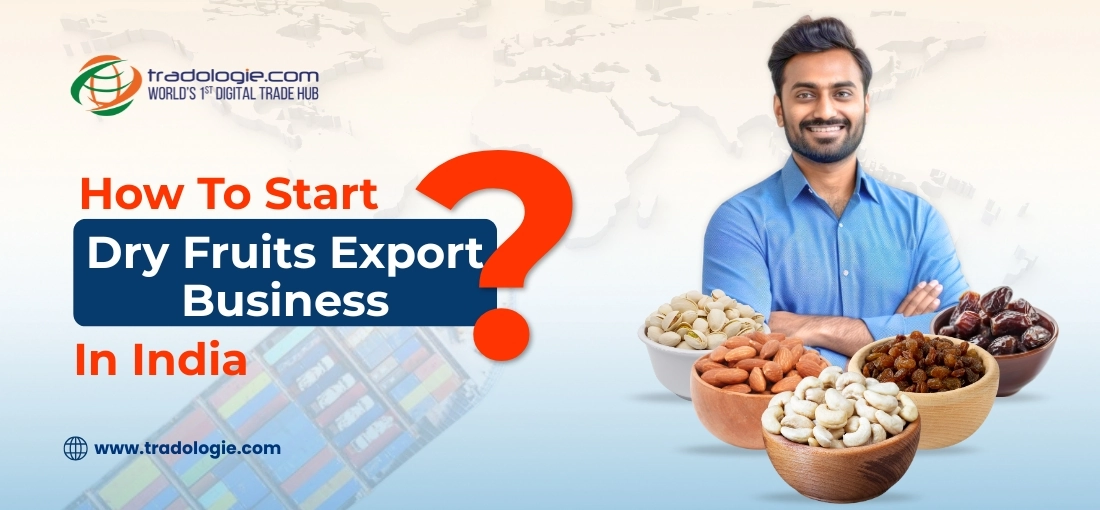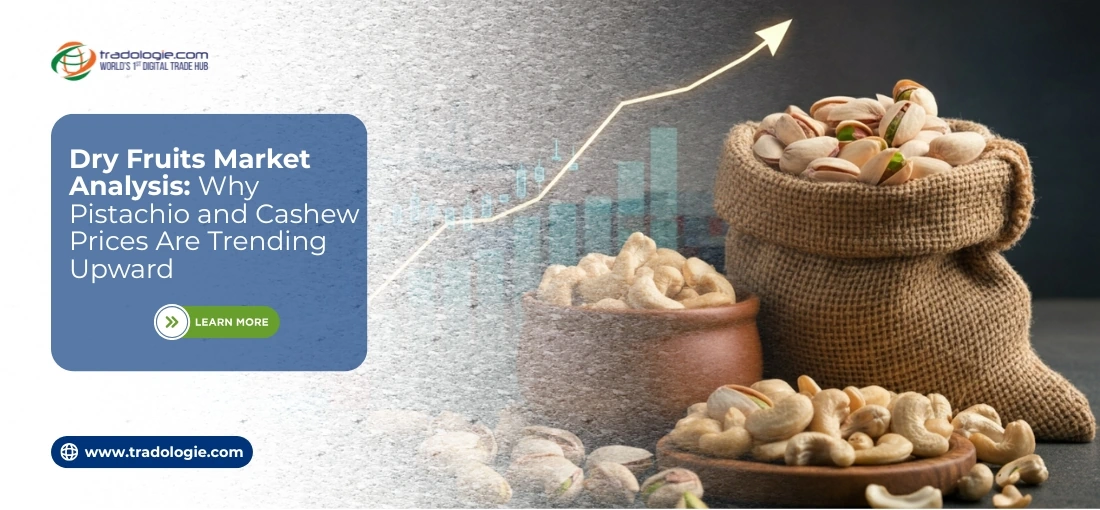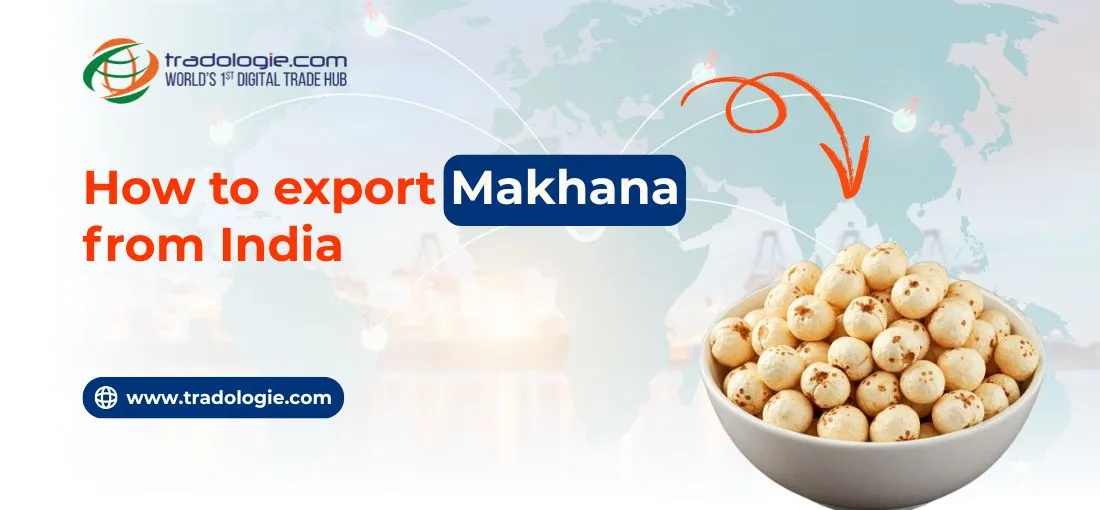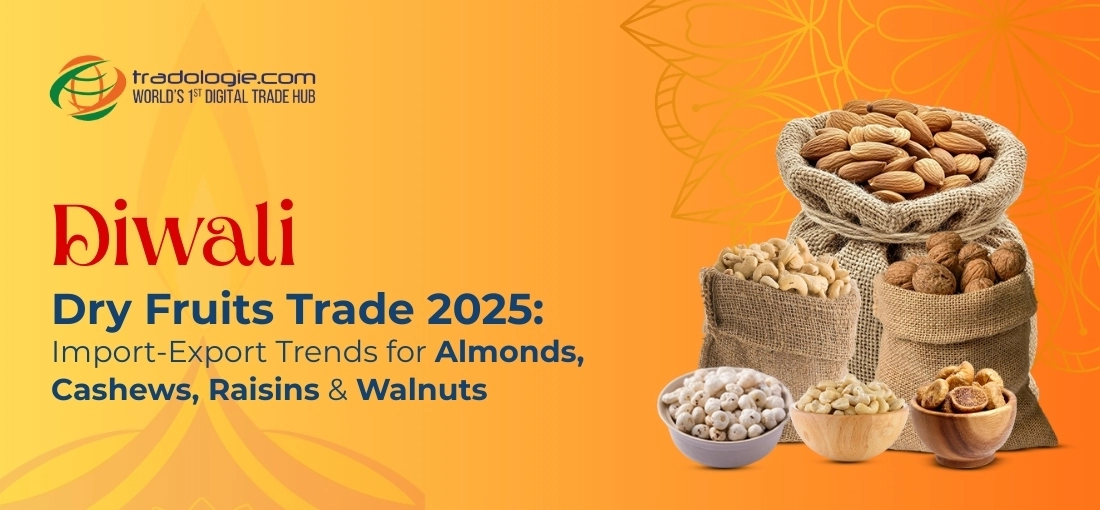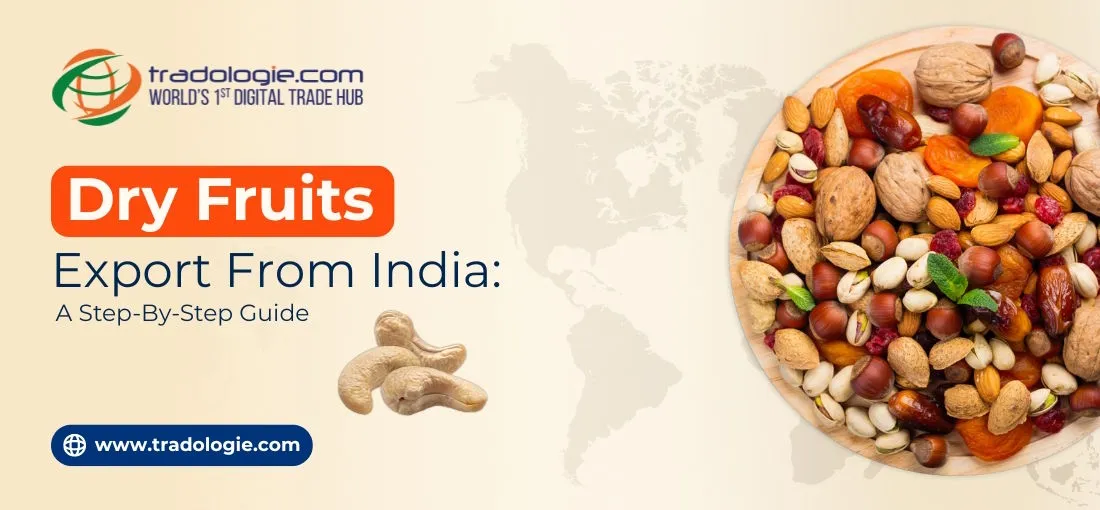-
India exported USD 357M cashews and USD 51.4M dried grapes in 2023.
-
High-value niche segment vs bulk crops like rice and wheat.
-
Top markets: UAE, Vietnam, Netherlands, USA, Morocco, Russia, Saudi Arabia.
-
Exporters need FSSAI, APEDA, Phytosanitary, USFDA certifications.
-
Use FOB/CIF/CNF pricing and secure payments (LC, escrow).
-
Tradologie.com enables verified B2B buyer connections globally.
-
Success depends on compliance, quality, and market intelligence.
A Niche Opportunity in Global Agro-Commodity Trade
Looking to export dry fruits globally? The global dry fruits market is a niche market which is dominated by premium pricing and region-specific consumptions. This is contrary to rice, wheat, and pulses that dominate agro-exports by volume. Indian dry fruits exporters who understand the mechanics of B2B trade execution enjoy a value-driven opportunity in international markets.
India is among the top exporters of cashew nuts and dried grapes and significantly caters to the bulk demands of Middle Eastern, European, and African markets. According to the data published by OEC (Observatory of Economic Complexity), India exported approximately USD 357 million of fresh/dried cashew nuts and USD 51.4 million of dried grapes in 2023. While these figures may not easily rival large-scale commodity exports, however, they do represent a focused and commercially attractive niche.
For businesses looking to establish or expand dry fruits export operations from India, a structured and strategic approach is essential. Here’s a breakdown of the critical steps to build a scalable and compliant export business in this segment.
Identifying Global Markets: Targeting High-Potential Importing Countries
Market identification is the first strategic milestone for any export-oriented business. One must evaluate demand patterns, tariff access, logistics viability, and buyer behaviour in target geographies when dealing with dry fruits.
Morocco, Romania, Russia, and Saudi Arabia were the top importers of Indian dried grapes in 2023.
At the same, India's cashew nut exports found consistent traction in Vietnam, the UAE, the Netherlands, and the United States. These countries are not just high-volume buyers but also serve as re-export or value-added hubs which is in the case of Vietnam and the Netherlands.
Traders must analyze
- Import duties and phytosanitary requirements in each market
- Consumption patterns (e.g., retail vs. industrial use)
- Distribution channels: wholesalers, food processors, and institutional buyers
Market research tools, trade reports, and buyer data platforms (such as ITC Trade Map or APEDA insights) can support this assessment.
Establishing B2B Connections with Verified Buyers
Once the destination markets are identified, the next step is building direct relationships with institutional buyers. In traditional trade formats, this involves business travel, participation in food expos, and outreach through intermediaries. However, this route to export dry fruits demands substantial time and financial investment.
Platforms like Tradologie.com have accelerated B2B engagement by offering verified buyer-seller interaction in real-time, eliminating middlemen, and reducing the cycle time for procurement negotiations. These transaction-focused platforms are particularly useful for exporters seeking FOB/CIF contract discussions, sample-based evaluations, and transparent price benchmarking.
For dry fruits exporters, buyer validation is equally critical. Vet buyers based on their trade history, payment reliability, and documentation standards to mitigate post-shipment disputes.
Compliance and Certification: Aligning with International Trade Protocols
Dry fruits being high-value and consumable food items, face rigorous quality checks and regulatory compliance requirements. Exporters must secure:
- FSSAI Registration - Mandatory for all food product exporters from India
- APEDA RCMC - Registration cum Membership Certificate for agricultural exporters
- Phytosanitary Certification and Lab Testing - Ensures products meet microbial and pesticide residue norms
- USFDA - Required when shipping to the United States
- Organic, Halal, Kosher, or Fair Trade Certifications - Based on buyer requirements or market standards
Certifications not only enhance credibility but also support pricing premiums and long-term procurement contracts with institutional buyers.
Pricing Structure & Payment Mechanisms
In B2B commodity trade, pricing models are standardized based on international Incoterms. Exporters should determine rates based on:
- FOB (Free on Board) - Suitable for buyers handling freight
- CIF (Cost, Insurance, Freight) - Ideal for full-service exporters
- CNF or CFR - Common in emerging markets for ease of documentation
For payment, exporters must adopt secure and bank-validated instruments such as:
- Letters of Credit (LC) - Risk-mitigated and internationally accepted
- Advance Payments with Contractual Security
- Escrow or Trade Insurance-backed Transactions
Additionally, given currency volatility, hedging strategies via forward contracts or currency derivatives can protect margins in multi-month contracts.
Logistics & CHA Partnerships
Exporting dry fruits requires temperature-controlled storage, proper fumigation, and damage-proof packaging. This is especially true for products like cashew nuts and raisins. So, selecting the right Customs House Agent (CHA) and freight forwarder is critical to ensuring compliant and on-time dispatches that don't hamper your products and their exports.
Key considerations include:
- Availability of containerized transport with food-grade standards
- Handling capabilities at the port of loading (e.g., Nhava Sheva, Tuticorin)
- Access to real-time shipment tracking and trade documentation services
- Experience in dry fruit cargo-specific HS Codes (e.g., 080131, 080620)
Freight strategy should be aligned with buyer terms—either bulk in containers or palletized cartons, depending on market expectations.
Conclusion:
The dry fruits export business in India offers a compelling opportunity for businesses focused on value-added agri-trade. This segment thrives on grade consistency, certification alignment, packaging precision, and market-specific customization, unlike high-volume staples.
Indian exporters can build profitable, long-term positions in the global dry fruit value chain, by identifying strategic markets, engaging directly with vetted buyers, and leveraging digital B2B procurement ecosystems.
As demand for health-oriented, shelf-stable food products grows across North America, Europe, and the Middle East, exporters who combine compliance, agility, and market intelligence will be best positioned to scale.

